The Diminutive Tyrannosaur Moros intrepidus
A small, but speedy dinosaur is the newest member of the Superfamily Tyrannosauroidea, a distant relative of the most famous dinosaur of all Tyrannosaurus rex. T. rex et al might have a reputation for being giant, bone-crunching apex predators, but for much of their evolutionary history, the tyrannosaurs have been rather over-shadowed by other super-sized dinosaur carnivores. Indeed, it was only in the last few million years of the Cretaceous that these types of theropod emerged as the apex predators of northern latitudes. The new dinosaur, named Moros intrepidus, at approximately 78 kilograms (data range 53 to 85 kilograms), around the same bodyweight as a South American Jaguar (Panthera onca), is about ninety times lighter than its famous top-of-the-food-chain relative.
Moros intrepidus
Ironically, contrary to public opinion, M. intrepidus might just be more typical of the Tyrannosauroidea bauplan than its more famous relatives – Gorgosaurus, Albertosaurus and T. rex.
The Newly Described Moros intrepidus from the Late Cretaceous of Central Utah
Picture credit: Jorge Gonzalez
Teeth and a Hind Limb from a New Theropod Dinosaur
The fossilised remains of a partial right leg consisting of a femur, a tibia, metatarsal bones and some toe bones from the fourth toe were discovered in sediments representing the lower Mussentuchit Member of the Cedar Mountain Formation located in Emery County (Utah). These fossils, in conjunction with isolated teeth from the front portion of the upper jaw (premaxilla) found nearby provide the basis for this new taxon. The deposits represent a terrestrial environment, a large delta and they date from approximately 96 million years ago (Cenomanian faunal stage of the Late Cretaceous).
Moros intrepidus represents the oldest known Cretaceous-aged tyrannosauroid discovered to date in North America. It extends the definitive fossil record for these types of dinosaurs by around 15 million years.
The Temporal Relationships and Phylogeny of the Tyrannosauroidea
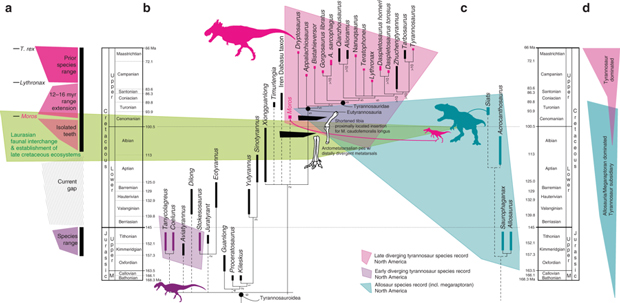
Picture credit: Nature Communications Biology
In the diagram (above), the section on the left (a), shows the fossil record gap between Late Jurassic tyrannosauroids and much larger Late Cretaceous members of the Tyrannosauridae family such as Lythronax (L. argestes). Section (b) demonstrates the temporal range of these theropods and the change in bauplan, whilst (c) demonstrates key evolutionary anatomical changes. The blue and pink coloured shapes in (d) reflect the transition from allosaur/megaraptoran dominated ecosystems to tyrannosaur dominated palaeoenvironments.
A Changing of the Guard When it Comes to Apex Predators
Palaeontologists know that the tyrannosaur lineage dates back a long way. For example, basal tyrannosaurids such as Stokesosaurus (S. clevelandi) are known from Upper Jurassic deposits of Utah. By the Late Cretaceous (Campanian faunal stage), tyrannosaurs were large and had become the iconic apex predators beloved by dinosaur fans and film directors. The fossil record for North American tyrannosaurs was essentially blank, giving palaeontologists a T. rex skull-sized headache when it came to piecing together how these theropods changed over time.
The discovery of Moros helps to narrow a 70-million-year-gap in the fossil record of tyrant lizards in North America.
Lead-author of the study, published in “Nature Communications” Lindsay Zanno of the North Carolina Museum of Natural Sciences explained:
“When and how quickly tyrannosaurs went from wallflower to prom king has been vexing palaeontologists for a long time. The only way to attack this problem was to get out there and find more data on these rare animals.”
A Silhouette of M. intrepidus Showing the Anatomical Position of the Known Fossil Material
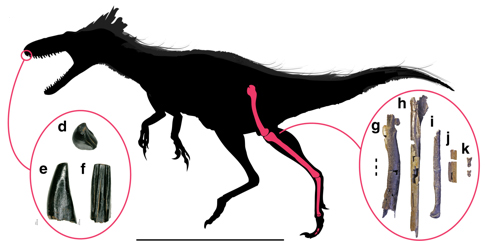
Picture credit: Nature Communications Biology
Living in the Shadow of Siats meekerorum
In 2013, two of the authors of the Moros intrepidus paper, Lindsay Zanno and Peter Makovicky (Field Museum, Chicago), published a study on a large allosauroid from similar-aged sediments. The dinosaur, named Siats meekerorum is estimated to have measured around 12 metres in length, dwarfing the contemporary Moros, which had a hip height of around 1.2 metres. The researchers conclude that within a palaeoenvironment dominated by giant, allosauroid theropods, tyrannosaurs such as M. intrepidus relied on their speed and small size and would have kept out of the way of the larger predators.
A spokesperson from Everything Dinosaur commented:
“During the Cenomanian, tyrannosauroids like Moros intrepidus were secondary predators within an ecosystem dominated by apex predators from a completely different part of the theropod family tree. For the greater part of the tyrannosaur evolutionary history, these types of dinosaurs were marginal predators, living in the shadow of much bigger carnivorous dinosaurs.”
A Life Reconstruction of Siats meekerorum with two Tyrannosauroids shown in the Foreground
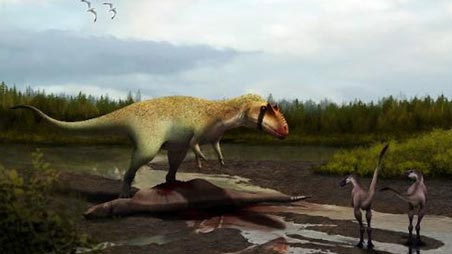
Picture credit: Julio Laceardo
To read Everything Dinosaur’s article on the discovery of Siats meekerorum: Unravelling the Apex Predators of the Cretaceous Before Tyrannosaurs.
Phylogeny Points at Asian Ancestry
A study of the longer limb bones indicates that the individual was around six to seven years of age when it died. It was likely to have reached its adult size. A phylogenetic assessment indicates an affinity with Asian tyrannosaur taxa, in essence, the ancestors of famous North American dinosaurs such as Gorgosaurus and Tyrannosaurus rex migrated into North America from Asia.
Assistant Research Professor Zanno stated:
“T. rex and its famous contemporaries such as Triceratops may be among our most beloved cultural icons, but we owe their existence to their intrepid ancestors who migrated here from Asia at least 30 million years prior. Moros signals the establishment of the iconic Late Cretaceous ecosystems of North America.”
Views of the Lower Leg Bones from the Right Leg of M. intrepidus
Picture credit: Nature Communications Biology
What’s in a Name?
The etymology of this new tyrannosauroid reflects the later faunal turnover that led to the apex predator roles in North America being dominated by tyrannosaurs. The genus name is from the Greek “Moros”, the embodiment of impending doom, for the descendants of this fast-running dinosaur were to evolve into some of the largest and most formidable terrestrial predators known to science. The species name is from the Latin “intrepidus”, a reference to these intrepid dinosaurs making the migration from Asia into North America and their subsequent dispersal.
Size is Not Everything
Although around ninety times lighter than Tyrannosaurus rex, Lindsay warns against underestimating the predatory abilities of Moros.
She added:
“Moros was lightweight and exceptionally fast. These adaptations, together with advanced sensory capabilities, are the mark of a formidable predator. It could easily have run down prey, while avoiding confrontation with the top predators of the day. Although the earliest Cretaceous tyrannosaurs were small, their predatory specialisations meant that they were primed to take advantage of new opportunities when warming temperatures, rising sea-level and shrinking ranges restructured ecosystems at the beginning of the Late Cretaceous. We now know it took them less than 15 million years to rise to power.”
The scientific paper: “Diminutive fleet-footed tyrannosauroid narrows the 70-million-year gap in the North American fossil record” by Lindsay E. Zanno, Ryan T. Tucker, Aurore Canoville, Haviv M. Avrahami, Terry A. Gates and Peter J. Makovicky published in Nature Communications Biology.
Visit the Everything Dinosaur website: Everything Dinosaur.


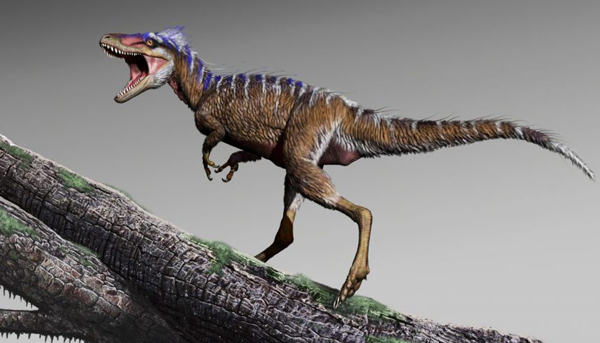
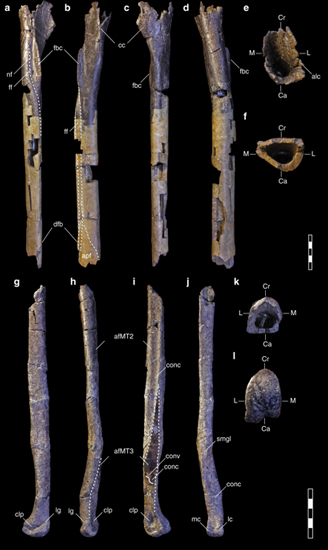




Leave A Comment